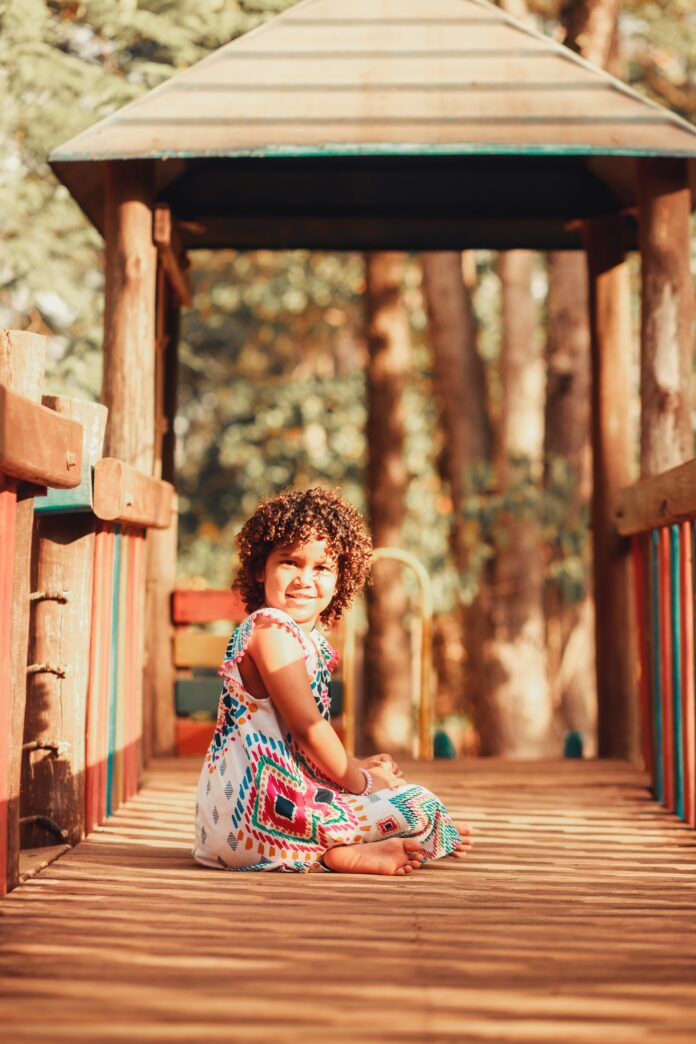
In the waning days of summer, when camps and vacations have all wrapped up, but school has yet to start, it can sometimes feel like the playground is the only option if you’re a kid (or a parent) facing an afternoon with nothing to do.
However, this summer — both the hottest summer ever and likely the coolest summer of the rest of your life — is showing how that tried and true way of beating late-vacation boredom is getting downright risky. As a recent op-ed from the Washington Post reports, playgrounds are getting so hot in summer heat that some surfaces can be dangerous to touch.
The story, which relies in large part on an Australian study of the temperatures of various playground surfaces, has some harrowing statistics: a plastic slide can reach a searingly hot 150 degrees even on an 85-degree day, while the rubber ground cover that’s ubiquitous in modern playgrounds can hit 160 in the same weather. These are acutely dangerous temperatures: a Denver toddler, Post writer Alyssa Rosenberg notes, got second-degree burns on his feet after walking barefoot across a rubber playground surface that was just that hot.
The rubber on a playground in a predominantly Black and Latinx part of the city was even hotter.
While the story makes it clear that, with increasing instances of extreme heat across the country, this is a climate-change issue, it does not address the fact that it’s a matter of climate justice too. Because there’s a very good chance that on the same day that the Denver toddler burned his feet in what is a predominantly white part of the city, the rubber on a playground in a predominantly Black and Latinx part of the city was even hotter.
This is yet another legacy of redlining, which left many historically Black neighborhoods throughout the country with fewer homeowners, more big developments and highways, and far fewer parks and trees than whiter (and wealthier) neighborhoods.
As a result, formerly redlined areas of some cities, including Denver, are, on average, 5 degrees hotter during the summer months than other neighborhoods (and can soar as much as 20 degrees higher than nearby areas).
You’re going to be surrounded by asphalt, no trees, no shade.
JEN DE MELO
And with shade at a premium too in old redlined districts, whatever playgrounds there are in a Black neighborhood (which are at an overall disadvantage when it comes to park and greenspace access) are more likely to be bearing the brunt of that extra heat directly.
“You’re going to be surrounded by asphalt, no trees, no shade,” says Jen De Melo, vice president of organizational innovation & strategic partnerships at Kaboom, a nonprofit dedicated to creating play space equity.
In recent years, shade structures have become a more common element in playgrounds, particularly in parts of the country that routinely experience high temperatures. But while there is plenty of research on the inequity in both park access and shade in Black neighborhoods writ large, there aren’t many studies that look at playground shade in particular. One looked at school playgrounds in St. Louis and found that as the number of students eligible for the free-lunch program rose, the amount of shade in the playground declined (more than three-quarters of students in the city’s public schools are Black).
Innovative playground designs aren’t being shown off in Black neighborhoods.
In addition to adding shade structures like sun sails, there are other means of cooling playgrounds off — namely by moving away from rubber and plastic. Timber structures are always going to be cooler than those made of plastic or metal. And then there are nature playgrounds that are made largely of logs and stone, which are far less conductive than rubber, metal, and plastic, making them cooler to the touch even on a hot day. Water elements such as fountains or misters can provide both an opportunity for kids to get soaked but also just general cooling in play areas thanks to the mist that comes off of them.
But more often than not, innovative playground designs aren’t being shown off in Black neighborhoods. Rather, Black kids are likely to be playing on outdated structures: a survey of Baltimore schoolyards by Kaboom! found that playgrounds in need of complete replacements were at schools with 8% more Black students. (To its credit, New York City has misters, spray showers, and other water features at public playgrounds across the city.)
“We’re starting to see tunnels and play-produced shade for destination play spaces — but those often aren’t in equity zones,” De Melo says. But cities that have a strong focus on play-space equity, like San Francisco, are putting exciting new designs in neighborhoods that have historically lacked high-quality playgrounds, like the nature playground that opened two years ago in Hunter’s Point, a historically Black neighborhood.
People are learning more and more about the benefits of connecting communities with nature.
De Melo thinks that there will be a growing trend in other cities too of moving toward such play spaces built from natural materials like mulch, stone, tree trunks, and stumps, and even newly manufactured wooden play elements, like slides carved out of logs and reinforced with epoxy. The drive to do so might not be rooted wholly in environmental justice, but it’ll help address the issue nonetheless.
“I think it’s going to be a focus on environmental stewardship,” that moves municipal governments in the direction of nature playgrounds. “But at the same time, people are learning more and more about the benefits of connecting communities with nature,” she says.


